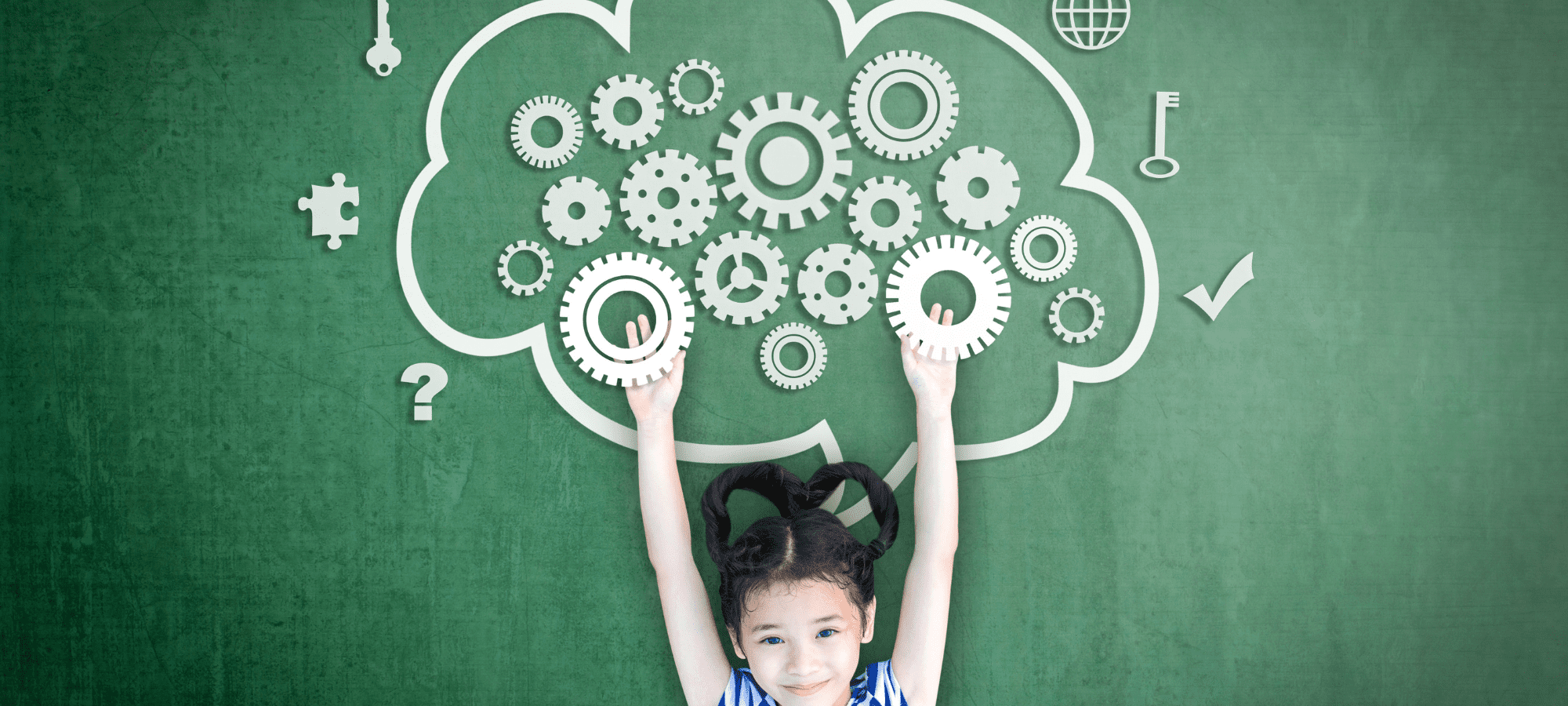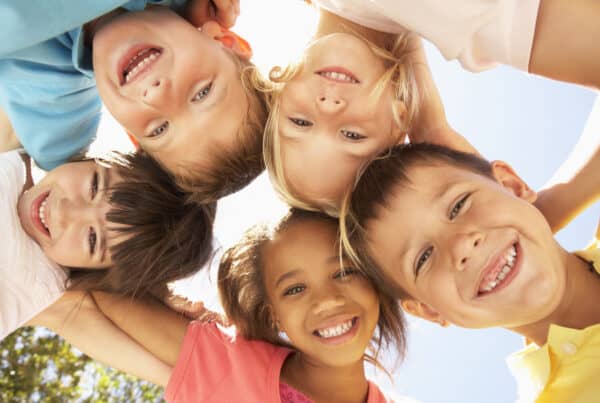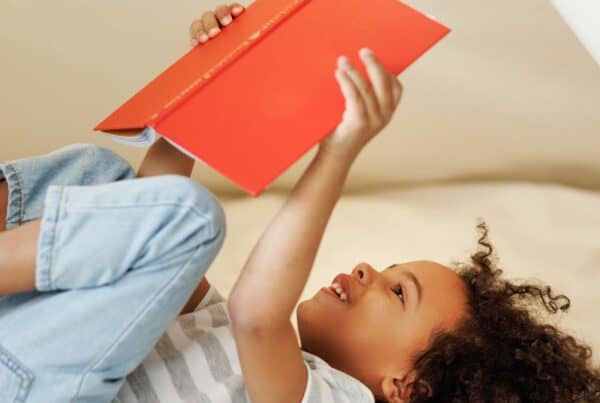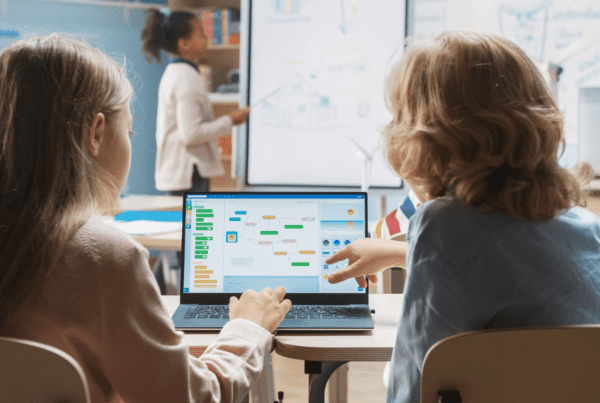Want to help your child to love learning, but not sure where to start?
As parents and teachers, you can help switch on the whole brain through activities that focus on attention. This helps grow goals and boost both learning and mental health.
Decades of neuroscience research has shown that every human brain benefits from a range of learning strategies that nurture, challenge and ultimately grow our grey matter.
The brain has two hemispheres – and broadly the right hemisphere handles creativity, imagination and strong emotions, while the left hemisphere leads cognitive functions such as speech, language and logic.
But people aren’t “right-brained” or “left-brained” – in fact, we all learn best if the teaching presents information in ways that trigger both sides of the brain. Effective learning requires information to appeal to every part of the brain.
Here are my best tips for right and left brain activation:
1. Just Breathe – Right Side
Being told to ‘take a deep breath’ when you’re stressed out? The excellent suggestion has a neuroscientific basis! A deep diaphragmatic breath (known by many little kids as “belly breaths”) fills your abdomen, rather than your
chest and triggers a relaxation response from your brain. It also calms unhelpful emotional responses that might be pinging around the right hemisphere, and puts us in the present. Plenty of schools have mindfulness programs for students, and establishing at-home mindfulness routines can put kids in the best headspace to learn – there’s plenty of suggestions at www.mindful.org.
2. Visualise Goals – Left Side
Ever noticed skiers in the Olympics planning their downhill run at the top and their head and body moving a bit like they are actually doing the real run?
Imagining and visualising doing a task lights up the same neural pathways that you use in doing it, and helps prepare for success with detailed planning.
Visualising the process (and the reward at the end, whether that’s gold on the podium or the ice cream after basketball training) kicks in feel-good neurochemicals such as dopamine and endorphins. Even better, studies have shown watching others complete a task – like play football, dance, or build a robot – also triggers the same brain regions as doing the task yourself. So the brain is still learning and growing, even as a spectator. Let your kids know they’re growing their abilities by watching, then challenge them to get out and try it themselves.
3. Throw Some Colours – Right Side
Creative play develops the brain’s executive functions, which allows growing children to understand and manage their emotions.
Getting creative can boost learning too, as getting expressive through colour, shapes and design switches on brain processes. This includes working memory, processing, information manipulation and abstraction, which is characterised by adaptability and flexibility.
Whether it’s drawing, painting, photography, constructing, or other artistic pursuits, challenging your child to incorporate some art into how they learn will help them find new ways to explore the information.
4. Problem Solve in Stages – Left Side
Plenty of games build your child’s brain as they notice and exploit patterns, improve abilities, and develop problem-solving skills. Chess, Pictionary, crosswords, charades – anything where there are rules, challenges
and patterns gets the brain pinging.
But a lot of structured “problem-solving” in the classroom means resolution by the end of the lesson or the day – and most real-world problems take much longer to unravel.
An ongoing challenge, whether that’s designing and building a go-kart or a treehouse, creating their own crossword, or mapping and cataloguing the family’s favourite films, ensures the brain is challenged to store and retrieve relevant information, and even grapple with unsolved questions in the subconscious. Ongoing challenges also mean your child discovers the joy of a “eureka moment” – when the lightbulb turns on and they see the solution they’d been seeking.
5. Create with Movement – Right Side
Physical activity stimulates the entire brain with more oxygen, growing new neurons in the hippocampus (the learning and memory centre) and boosting frontal lobe (problem-solving centre) plasticity.
Our kids can’t effectively learn if their bodies and brains aren’t being stimulated with physical activity, at least 30 minutes a day and ideally more than an hour.
So if there’s something they’re trying to learn, add music and a dance as they practise. Maybe even get inspiration from Tiktok, or film it to share with family and friends if they’re keen to show off their skills.
The good news is, the more physical activity throughout the day will also promote better sleep at night. Good sleep is important to several brain functions, including how nerve cells (neurons) communicate with each other, and removing toxins in your brain that build up while you are awake.
6. Put Pen to Paper – Left Side
This generation of learners are what we call “digital natives” – they have been born into a world of screens.
But going back to pen and paper can provide a brain-boost for our switched-on kids.
My colleague and education academic Dr Ragnar Purje has found handwriting, and especially writing with chalk for younger children, has a “profoundly important” role in developing fine and gross motor skills, and the
intellectual ability to construct a story.
The challenge of handwriting, especially if it is frustrating at first, brings numerous benefits for young students that tapping and swiping a screen cannot replicate.
Fold and staple some blank pages into a book, and give your child the freedom to pen a story – the discipline, dedication, determination and resilience required will build neurological, neuromuscular, gross and fine motor
skill pathways.
If writing on paper is a struggle, that’s okay – a tweet, SMS, blog or social media post about what they’re learning can also broaden brain activity. The key is to practise writing things concisely, logically and in an analytical way.
7. Focus to Absorb – Both Sides
I was in my new car recently with BMW’s chief driving experience instructor for Australia. Steve is a former racing driver, and his dad was an international champion.
Steve’s key piece of advice whether on the road or race track: Be focused, and take in as much relevant data as possible to complete your drive successfully.
Ditto for learning. Without focus, memory formation and consolidation, recall is compromised. Optimal learning requires the brain-friendly learning experiences already outlined, but all done with focus.
So challenge your children or students to engage in various projects and activities that require them to constantly have stretch goals, or new achievements to master. That constant growth will improve their ability to focus and maximise the brain data they are collecting for learning. Just as important, they grow pride and confidence in their rapidly-expanding abilities.
Finally, don’t think these processes are just for kids. Neuroplasticity tells us it’s never too late to retrain our brain – so challenge yourself alongside your little people.





